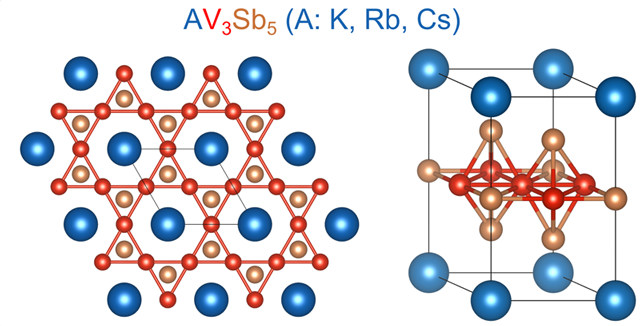PC1-5-INV
Materials discovery of next-generation quantum materials, the AV3Sb5 (A: K, Rb, Cs) kagome superconductors
*Brenden R. Ortiz1, Samuel M. L. Teicher1, Linus Kautzsch1, Paul M. Sarte1, Yong Hu4, Julia L. Zuo1, Emily C. Schueller1, Matthew J. Krogstad6, Stephan Rosenkranz6, Raymond Osborne6, Noah Ratcliffe1, Eric M. Kenney3, Michael J. Graf3, Lidia C. Gomes8, Jennifer R. Morey10, Michal Winiarski10, Mitchell Bordelon1, John S. Mangum7, Iain W.H. Oswald9, James R. Neilson9, Elif Ertekin8, Tyrel M. McQueen10, Eric S. Toberer7, John Harter1, Leon Balents1, Junfeng He4, Jacob P.C. Ruff2, Jose A. Rodriguez-Rivera5, Ram Seshadri1, Stephen D. Wilson1
- University of California Santa Barbara, United States1
- CHESS, Cornell University, United States2
- Boston College, United States3
- University of Science and Technology of China, China4
- NIST Center for Neutron Research, United States5
- Argonne National Laboratory, United States6
- Colorado School of Mines, United States7
- University of Illinois at Urbana-Champaign, United States8
- Colorado State University Fort Collins, United States9
- Johns Hopkins University, United States10
New materials discovery has been a fundamental part of the synthetic chemistry, condensed matter physics, and materials fields. The targeted synthesis of new ternary and quaternary compounds has immense potential for introducing new chemical complexity and diversity into the known model systems. Our discovery of the AV3Sb5 (A: K, Rb, Cs) kagome superconductors is a prime example of how rational exploration of phase space can lead to untold opportunity. The AV3Sb5 materials are quasi-2D (structurally and electronically), exfoliatable, air-stable, metals with a structurally perfect kagome network of vanadium. The entire family exhibits competition between charge density wave (CDW) order below (80-100K), and a superconducting (Tc = 0.9-2.5K) ground state. Our work indicates that the systems are topologically nontrivial, and surface states should be close to the natural Fermi level. A complex interplay between the electronic properties and the CDW is observed, with the possibility of a chiral CDW as the source of anomalous Hall effect in the entire family. In this discussion I will describe the rapidly growing body of knowledge surrounding the AV3Sb5 system, including potential topological surface states, the debate regarding unconventional superconductivity, and the interplay of charge density wave order and superconductivity.
Figure Caption:
The AV3Sb5 (A: K, Rb, Cs) family of kagome metals are exfoliatable, quasi-2D, metals that sport a structurally perfect kagome lattice of vanadium at room-temperature. All members of the family exhibit charge density wave order and superconductivity, making them prime candidates for studying the interplay of electronic instabilities within the framework of a kagome lattice.
Keywords: Kagome superconductor, Charge density wave order, Materials discovery, Non-trivial topology
